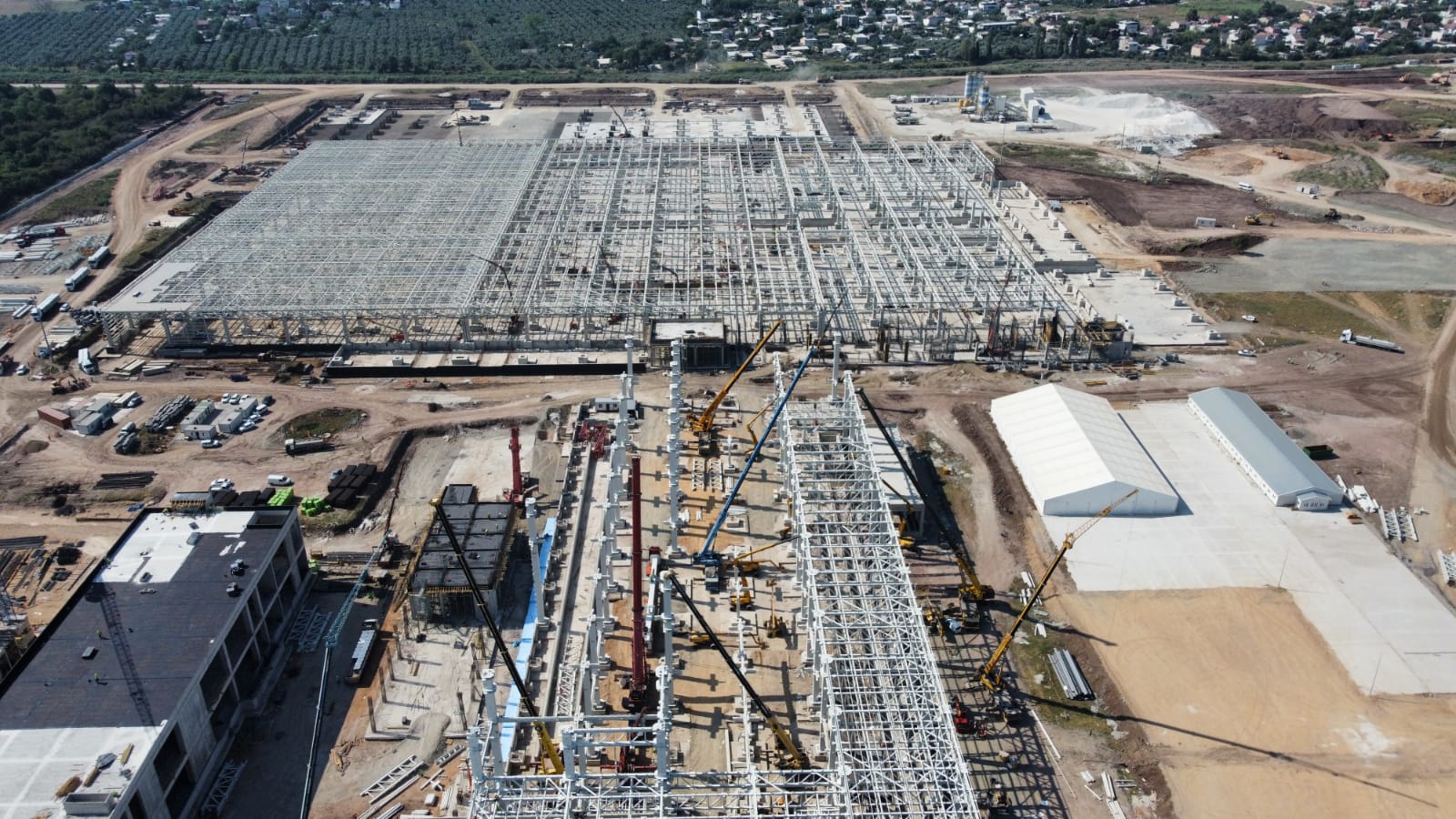
The use of steel material in buildings began in 1778 with the Coalbrookdale Bridge and began to spread as a result of technological developments in steel material production and the rapid search for solutions in the building sector.
The use of steel as building material, geometry flexibility in manufacturing has paved the way for designers, and it is frequently used as a solution for projects such as factory buildings, hangar, sports facilities and warehouses with wide openings and heights.
The steel, which has higher strength values compared to the concrete used as the general building element in the buildings, provides a wide area to the engineers with its balanced strength structure in compression and drawing loads. When the building material is rated according to the bearing capacity of its own weight, a 40% weight reduction in structural designs can be achieved, which moves the design boundaries forward. Thanks to the high carrying capacity of the steel, steel structural elements are produced in smaller cross-sections and dimensions. This allows more efficient use of the building area.
Structural Steel materials Due to the fact that manufacturing is carried out in a controlled factory environment, the effect of external factors on the production quality is minimized and quality continuity is ensured. Mounting applications can be realized quickly with the pre-produced fabrication carrier elements and the least impact on external factors by appropriate planning.
AISC Structural Steel application in the United States, in Europe and Turkey Eurocode3 "Design of Steel Structures, Design and Construction Regulation on Principles" was brought under control with such standards and regulations.
Efficiency and speed in production and assembly processes and return on investments can be achieved early.
As Olmetsan Metal; EN 1090-1 ZA 2+, EN 1090-2 EXC3 and EN ISO 3834-2 certified European standards in accordance with the 305/2011 / EU Building Materials directive in accordance with the CE certified products in the home and abroad, Factory Buildings, Shopping and Business Centers, It serves to meet the needs of the sector in Gyms, High Rise Buildings, Hangars, Bridges and other Structural Steel Projects.
We meet the requirements of the Structural Steel Sector at home and abroad by offering CE certified products in accordance with the 305/2011 / EU directive with our Factory Production Controls and our production in compliance with European standards.